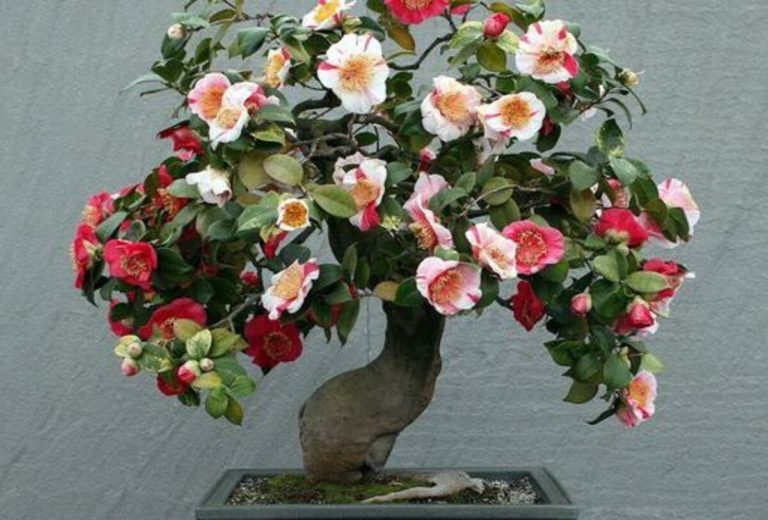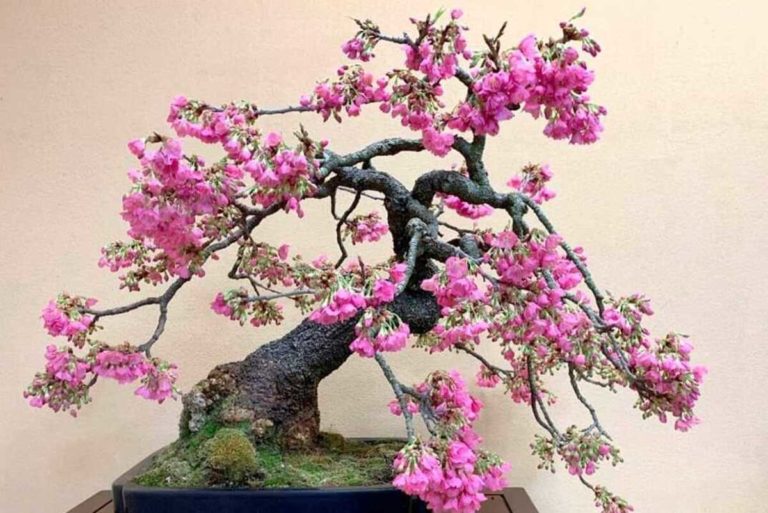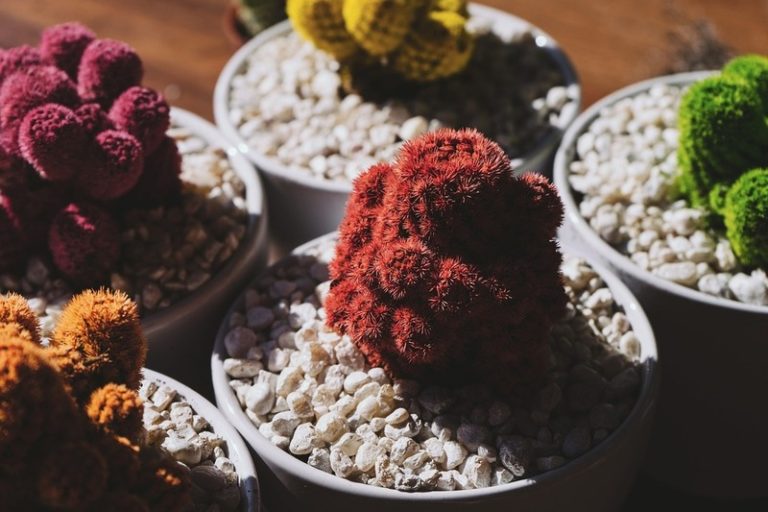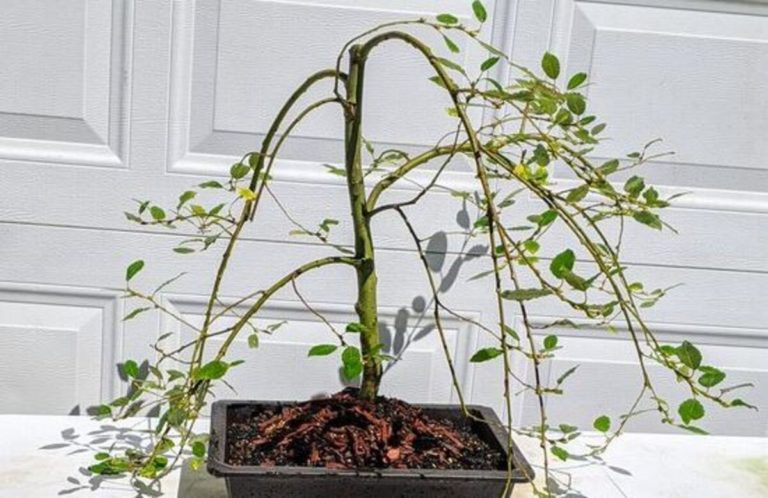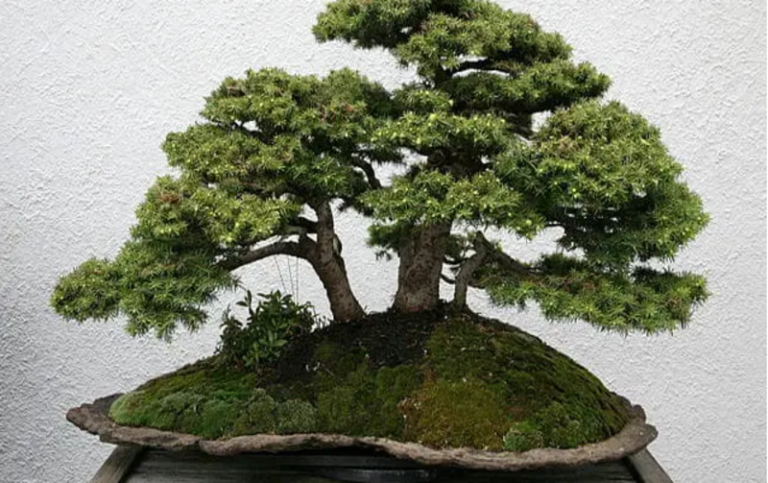Moyogi Bonsai: Preserving the Spirit of Wild Trees in a Miniature Form
Bonsai is a remarkable ancient art form that captivates many with its miniature trees. One particular style, called Moyogi Bonsai, stands out for its natural and informal design. In this article, we will explore the history, characteristics, cultivation, and appreciation of Moyogi Bonsai.
What is a Moyogi Bonsai?
Moyogi bonsai is a style of bonsai that looks casual and natural, like a tree you would find in nature. The word “Moyogi” means “twisted” or “curved” in Japanese. This is a reference to the bonsai’s beautiful curves and uneven shape. In Moyogi Bonsai, the trunk and branches have soft curves and bends that give the tree a feeling of movement and visual interest. The foliage is carefully arranged to resemble the growth patterns of trees in the wild, creating a realistic and harmonious overall design. Moyogi Bonsai represents a balanced blend of natural beauty and artistic expression, making it a popular choice among bonsai enthusiasts.
History and Origins of the Moyogi Bonsai
The history of Moyogi Bonsai can be traced back to the ancient art of bonsai, which originated in China and later gained prominence in Japan. Bonsai, meaning “tray planting” in Japanese, involves cultivating and shaping miniature trees in containers.
The practice of bonsai in China dates back over a thousand years, when it was initially a way to create landscapes in miniature form. These miniature landscapes were known as penjing. Chinese scholars and artists meticulously crafted these penjing, incorporating natural elements such as rocks, water features, and small trees. It is believed that these early penjing practices laid the foundation for bonsai as it is known today.
During the Kamakura period in Japan (1185–1333), Zen Buddhist monks brought back bonsai from China and began cultivating their own versions. The Japanese embraced bonsai, adapting it to their own cultural sensibilities and incorporating Zen principles of simplicity and harmony with nature.
As bonsai gained popularity in Japan, different styles emerged, including Moyogi Bonsai. The Moyogi style evolved as a departure from the formal and rigidly structured styles that dominated earlier bonsai aesthetics. Moyogi Bonsai embraced a more naturalistic and informal approach, capturing the essence of trees found in the wild.
Notable pioneers and practitioners played a significant role in shaping the development and recognition of Moyogi Bonsai as a distinct style. Bonsai artists like Saburo Kato, John Yoshio Naka, and Kimura Masahiko introduced their unique interpretations and contributed to the popularization of Moyogi Bonsai not only in Japan but also globally.
Today, Moyogi Bonsai continues to captivate bonsai enthusiasts worldwide, representing a harmonious blend of artistry and the beauty of nature. The style’s emphasis on natural, curved forms and asymmetry has made it a favorite choice for those seeking a more relaxed and organic bonsai design.
Types of Moyogi Bonsai
Moyogi Bonsai encompasses a wide range of tree species that can be shaped and styled in the naturalistic and informal manner characteristic of this bonsai style. Here are some popular tree types often used in Moyogi Bonsai:
1. Maple (Acer spp.): Maple trees, such as Japanese maple (Acer palmatum), offer beautiful foliage and stunning autumn colors. Their delicate leaves and elegant branching structure make them ideal for creating Moyogi Bonsai with graceful curves.
2. Pine (Pinus spp.): Pine trees, including Japanese black pine (Pinus thunbergii), are commonly used in bonsai, including Moyogi style. Their rugged, twisted trunks and long, flexible needles lend themselves well to the naturalistic and informal aesthetic of Moyogi Bonsai.
3. Juniper (Juniperus spp.): Junipers, such as Japanese garden juniper (Juniperus procumbens), are known for their adaptable nature and unique foliage. Their twisting branches and rugged bark make them excellent choices for creating visually captivating Moyogi Bonsai.
4. Elm (Ulmus spp.): Various elm species, such as Chinese elm (Ulmus parvifolia), are popular for bonsai cultivation due to their small leaves, fine branching, and ability to tolerate pruning. They can be shaped into Moyogi Bonsai with gently curved trunks and branching structures.
5. Cedar (Cedrus spp.): Cedars, like the Japanese cedar (Cryptomeria japonica), are evergreen trees that lend themselves well to Moyogi Bonsai. They have a distinctive layered foliage arrangement and can be trained to have appealing curved trunks and branches.
6. Spruce (Picea spp.): Spruce trees, such as the Colorado blue spruce (Picea pungens), are appreciated for their vibrant blue-green foliage and conical shape. With careful shaping and pruning, they can be transformed into Moyogi Bonsai with a natural and irregular form.
These are just a few examples of tree species commonly used in Moyogi Bonsai. However, bonsai enthusiasts have experimented with various other tree types, each bringing its own unique charm and character to the naturalistic and informal style of Moyogi Bonsai.

Moyogi Bonsai and its Symbolism
Moyogi Bonsai holds symbolism and represents various aspects that resonate with bonsai enthusiasts and nature lovers. Here are some symbolic interpretations associated with Moyogi Bonsai:
Harmony with Nature: Moyogi Bonsai shows the beauty and unity of the wild world. Its soft curves, lack of order, and organic shape are like the quirks and flaws of nature. It’s a lesson to love and respect the beauty in all living things, even if they don’t look the same.
Balance and Serenity: Moyogi Bonsai represents a balance between opposing elements. The intertwining curves and branches symbolize the harmonious coexistence of contrasting forces, such as strength and delicacy, movement and stillness. It inspires a sense of tranquility and serenity, reminding us to seek equilibrium in our lives.
Resilience and Perseverance: The twisted trunks and branches of Moyogi Bonsai often reflect the resilience of trees that endure the challenges of nature. They can symbolize the strength, adaptability, and perseverance required to overcome obstacles in life. Moyogi Bonsai serves as a metaphor for resilience and the ability to thrive even in adverse conditions.
Reflection of the Seasons: Like other bonsai styles, Moyogi Bonsai captures the changing seasons. The transformation of foliage color, the growth and shedding of leaves, and the exposure of intricate branching patterns represent the cycle of life. It reminds us of the fleeting nature of time and the importance of embracing each season as it comes.
Individuality and Uniqueness: The naturalistic and informal style of Moyogi Bonsai celebrates the uniqueness of each tree. No two Moyogi Bonsai are identical, as they embody the distinct character and personality of the tree species used. It encourages us to embrace our own individuality and appreciate the beauty in our differences.
These symbolic interpretations are not fixed or universally agreed upon, as symbolism can be deeply personal and subjective. However, they provide a glimpse into the deeper meanings that enthusiasts associate with Moyogi Bonsai, making it not only an art form but also a source of inspiration and contemplation.
Characteristics of the Moyogi Bonsai
The Moyogi Bonsai style is characterized by several distinct features and characteristics that set it apart from other bonsai styles. These features contribute to its naturalistic and informal aesthetic. Here are the key characteristics of Moyogi Bonsai:
- Naturalistic Form: Moyogi Bonsai aims to replicate the appearance of trees found in nature. It emphasizes a more organic and irregular shape compared to formal bonsai styles. The trunk and branches of Moyogi Bonsai exhibit gentle curves, twists, and bends, mimicking the natural growth patterns of trees.
- Asymmetry: Unlike some other bonsai styles that strive for balance and symmetry, Moyogi Bonsai embraces asymmetry. The branches and foliage are arranged in an irregular manner, avoiding a perfectly balanced or mirrored appearance. This adds to the sense of naturalness and reflects the beauty of asymmetry found in nature.
- Curved Trunk: The trunk of a Moyogi Bonsai often exhibits graceful curves. These curves can be S-shaped, semi-cascade, or any other natural bend, giving the bonsai a sense of movement and visual interest. The curves create an aesthetic flow that draws the viewer’s eye along the trunk.
- Informal Branching Structure: The branching structure of Moyogi Bonsai tends to be more irregular and free-flowing compared to formal bonsai styles. The branches are often asymmetrical and positioned at varying heights and angles, resembling the random growth patterns seen in trees growing in nature.
- Realistic Foliage Arrangement: The foliage in Moyogi Bonsai is carefully arranged to mimic the natural growth pattern of the tree species. The leaves are positioned in a way that represents the random distribution and density observed in trees in the wild. This attention to detail enhances the realism of the bonsai.
- Sense of Grace and Harmony: Even though Moyogi Bonsai looks natural and casual, it still has a sense of beauty and balance. The trunk, branches, and leaves are all put together in a way that makes the tree look balanced and beautiful. It shows how beautiful nature is and how peaceful a well-composed scene can be.
Moyogi Bonsai embodies the beauty of imperfection and celebrates the irregularities found in nature. It is a style that embraces the organic and the uncontrolled, showcasing the charm and character of trees in miniature form.
How to Grow Moyogi Bonsai
Growing Moyogi Bonsai requires careful attention and proper techniques to achieve the desired naturalistic and informal style. Here are some steps to help you grow Moyogi Bonsai successfully:
1. Tree Selection: Choose a tree species suitable for Moyogi Bonsai. Common choices include maple, pine, juniper, elm, and cedar. Consider factors such as climate, available space, and your personal preferences when selecting a tree.
2. Potting and Soil: Select a suitable bonsai pot that provides good drainage. Use a well-draining bonsai soil mix, typically consisting of a combination of akadama, pumice, and lava rock. This helps maintain proper moisture levels and promotes healthy root growth.
3. Pruning and Shaping: Regular pruning is crucial for shaping and maintaining the naturalistic form of Moyogi Bonsai. Trim back excessive growth, including branches, leaves, and roots, to achieve the desired shape and balance. Use sharp bonsai tools to make clean cuts and avoid damaging the tree.
4. Wiring: Wiring is often used to guide branches into the desired position. Wrap bonsai wire carefully around the branches, taking care not to apply excessive pressure that may cause damage. The wiring is usually done during the tree’s dormant period and is removed once the branches have set in their new position.
5. Watering: The health of your Moyogi Bonsai depends on how you water it. When the dirt starts to get dry, water the bonsai well, but don’t water it too much because that can cause root rot. How often you water varies on things like the temperature, the type of tree, the size of the pot, and the type of soil. Check the amount of moisture by putting your finger in the dirt to see how wet it is.
6. Fertilization: Feed your Moyogi Bonsai with a balanced bonsai fertilizer during the growing season. Follow the instructions on the fertilizer package for the correct dosage and frequency. Fertilizing helps provide essential nutrients for healthy growth and development.
7. Sunlight and Positioning: Place your Moyogi Bonsai in a location that provides the appropriate amount of sunlight for the specific tree species. Most bonsai trees thrive in bright, indirect sunlight. Monitor the tree’s response to sunlight and adjust its positioning accordingly.
8. Winter Care: Protect your Moyogi Bonsai during the winter months, especially if the tree species is not fully cold-hardy. Consider providing winter protection such as placing the bonsai in an unheated but sheltered area or using insulating materials.
9. Regular Maintenance: Check your Moyogi Bonsai often for signs of stress, pests, and diseases. Remove any dead or sick parts and prune as needed to keep the shape you want. Use a soft brush to gently remove dust and other dirt from the leaves.
If you follow these rules and pay attention to what your tree needs, you can grow a beautiful Moyogi Bonsai that shows off the natural and casual qualities of this style of bonsai. Remember that growing a bonsai takes time and ongoing care to get the results you want.
Benefits of the Moyogi Bonsai
Moyogi Bonsai offers numerous benefits, both aesthetic and therapeutic, for enthusiasts and nature lovers. Here are some of the key benefits of growing and appreciating Moyogi Bonsai:
Connection with Nature: Growing Moyogi Bonsai helps people to form strong bonds with nature. The process of caring for and maintaining a living tree offers a sense of grounding and respect for nature. It allows you to bring a bit of nature into your home or yard, fostering peace and tranquillity.
Artistic Expression: Moyogi Bonsai is a living art form that allows for creative expression. Shaping and pruning the bonsai tree to achieve the desired naturalistic form involves artistic decisions and attention to detail. It provides an outlet for artistic expression and allows individuals to showcase their personal aesthetic sensibilities.
Stress Relief and Relaxation: Engaging with Moyogi Bonsai can be a tranquil and therapeutic activity. The process of providing for a bonsai, which includes pruning, watering, and arranging the foliage, can be meditative and reduce tension. There is evidence that spending time with bonsai trees promotes tranquility, mindfulness, and a feeling of well-being.
Patience and Mindfulness: Growing Moyogi Bonsai requires patience and a mindful approach. Bonsai cultivation is a long-term endeavor that teaches patience and the value of gradual progress. It encourages individuals to be present in the moment, observing the growth and development of the bonsai tree over time.
Educational Value: Moyogi Bonsai provides opportunities for learning and acquiring knowledge about tree species, horticulture, and bonsai techniques. It promotes a deeper comprehension of the natural world and the intricate processes involved in plant growth and maintenance. Bonsai can also cultivate an appreciation for the environment and the significance of conservation.
Decorative and Aesthetic Appeal: Moyogi Bonsai serves as a unique and visually captivating decorative element. The naturalistic and informal style of Moyogi Bonsai adds an artistic touch to any living space, garden, or outdoor setting. It can become a focal point, enhancing the overall aesthetic appeal of the surroundings.
Community and Sharing: Moyogi Bonsai cultivation often fosters a sense of community among bonsai enthusiasts. It provides opportunities to connect with fellow enthusiasts, attend workshops or bonsai exhibitions, and share knowledge and experiences. Engaging in the bonsai community can enrich the overall bonsai journey and provide a platform for learning and growth.
Moyogi Bonsai offers a multitude of benefits that extend beyond the physical presence of the bonsai tree itself. It brings nature, art, and mindfulness together, providing a fulfilling and rewarding experience for individuals passionate about bonsai and the beauty of the natural world.

Styling and Design of the Moyogi Bonsai
The styling and design of Moyogi Bonsai emphasize a naturalistic and informal aesthetic. The goal is to create a miniature tree that resembles its larger counterpart in the wild, with organic curves, asymmetry, and a balanced composition. Here are some key elements and considerations in styling and designing Moyogi Bonsai:
- Trunk and Branches: Moyogi Bonsai typically features a trunk with gentle curves, twists, and bends, reflecting the natural growth patterns of trees. The trunk should exhibit a sense of movement and flow, capturing the essence of a mature tree in nature. The branches should be arranged in an irregular and asymmetrical manner, varying in thickness and length, to create a more realistic appearance.
- Branch Placement: Consider the position and angle of branches to achieve a balanced and harmonious composition. Avoid symmetrical or parallel branching, as it goes against the naturalistic style of Moyogi Bonsai. Place branches at different heights and angles, with the lower branches generally longer and thicker than those higher up the tree.
- Foliage Arrangement: The foliage of Moyogi Bonsai should be arranged in a way that mimics the natural growth pattern of the tree species. Consider the density, distribution, and size of the leaves to achieve a realistic appearance. Thin out excessive foliage to allow light to reach the inner branches and promote better airflow, which is crucial for the tree’s health.
- Negative Space: Incorporate negative space within the design of Moyogi Bonsai. Negative space refers to the areas between branches and foliage where there is an absence of elements. This adds visual interest and creates a sense of balance and openness in the overall composition.
- Informal Pot Selection: Choose a bonsai pot that complements the naturalistic and informal style of Moyogi Bonsai. Earth tones and simple designs are often preferred to avoid overpowering the tree. Consider the size of the pot in relation to the tree’s proportions, ensuring that it provides stability and adequate space for root growth.
- Balance and Proportion: Achieving a sense of balance and proportion is crucial in Moyogi Bonsai design. The overall tree should have a visually pleasing and harmonious form. Ensure that the height, width, and thickness of the trunk, branches, and foliage are in proportion to each other, creating a well-balanced composition.
- Continuity and Flow: Moyogi Bonsai should have a sense of continuity and flow throughout its design. The curves of the trunk and branches should connect seamlessly, leading the viewer’s eye along the tree’s contours. Avoid abrupt or disjointed transitions that disrupt the natural flow of the bonsai’s form.
Remember that styling and creating a Moyogi Bonsai is a creative and unique process. Seeing and catching the natural beauty and spirit of trees in the wild takes time and practice. Stunning Moyogi Bonsai designs can be made by watching real trees in their natural environments and looking at the work of experienced bonsai artists.
How to Care for and Maintain Moyogi Bonsai
Caring for and maintaining Moyogi Bonsai requires regular attention and specific techniques to ensure the health and beauty of the tree. Here are some essential care guidelines for Moyogi Bonsai:
Watering: Proper watering is crucial for the health of your Moyogi Bonsai. Water the tree thoroughly when the soil surface starts to feel slightly dry, but avoid overwatering, as it can lead to root rot. Ensure that the water reaches the entire root system by watering the tree evenly from the top. Use a watering can or a fine nozzle to prevent soil erosion.
Sunlight and Positioning: Moyogi Bonsai generally thrive in bright, indirect sunlight. Place your bonsai in a location that provides the appropriate amount of light for the specific tree species. Monitor the tree’s response to sunlight and adjust its positioning accordingly. Rotate the bonsai regularly to promote even growth and prevent lopsidedness.
Pruning: Regular pruning is essential for maintaining the shape and health of Moyogi Bonsai. Prune back excessive growth, including branches, leaves, and roots, to achieve the desired shape and balance. Use sharp bonsai tools to make clean cuts and prevent damage to the tree. Pruning is typically done during the tree’s dormant period or in the early spring.
Wiring and Shaping: Wiring is often used to guide branches into the desired position and shape. Carefully wrap bonsai wire around branches, taking care not to apply excessive pressure that may cause damage. Remove the wire once the branches have set in their new position, typically after a few months. Regularly inspect the wiring to prevent it from cutting into the bark.
Fertilization: Feed your Moyogi Bonsai with a balanced bonsai fertilizer during the growing season. Follow the instructions on the fertilizer package for the correct dosage and frequency. Fertilizing helps provide essential nutrients for healthy growth and development. Adjust the fertilization regimen based on the specific needs of your tree species.
Soil and Repotting: Use a well-draining bonsai soil mix that allows for proper aeration and moisture retention. Repotting is typically done every 2–3 years to prevent the soil from becoming compacted and to promote root health. Repot the bonsai during the dormant period, usually in the early spring before new growth begins.
Pest and Disease Control: Regularly inspect your Moyogi Bonsai for pests such as aphids, scale insects, or spider mites. If you notice any infestation, treat the tree promptly with suitable organic or chemical pesticides. Additionally, keep an eye out for signs of diseases such as root rot or fungal infections. Address any issues promptly to prevent further damage to the tree.
Winter Care: During the winter, protect your Moyogi Bonsai, especially if the tree species isn’t fully cold-hardy. Put the bonsai in a place that isn’t heated but has cover, like a garage or cold frame, to keep it safe from freezing temperatures and hard winter weather. You could add more security by using insulation materials or dirt.
Regular Maintenance: Check your Moyogi Bonsai frequently for symptoms of stress, such as drooping leaves, color changes, or pests. Remove any dead or diseased tree components, such as twigs or leaves. Clean the leaves carefully with a soft brush to eliminate dust and other debris that might obstruct the plant’s ability to breathe.
By following these care guidelines and being attentive to the specific needs of your Moyogi Bonsai, you can ensure its health and vitality, allowing it to flourish and embody the naturalistic beauty that defines this bonsai style.
Moyogi Bonsai Care Sheet
| Aspect | Care Tips |
| Watering | Water thoroughly when the soil surface feels slightly dry |
| Avoid overwatering to prevent root rot | |
| Sunlight and Positioning | Place in bright, indirect sunlight |
| Rotate regularly for even growth | |
| Pruning | Regularly prune to maintain shape and health |
| Use sharp bonsai tools for clean cuts | |
| Wiring and Shaping | Wire branches to guide them into desired positions |
| Remove wire once branches set in new position | |
| Fertilization | Use a balanced bonsai fertilizer during the growing season |
| Follow instructions on fertilizer package for dosage and timing | |
| Soil and Repotting | Use well-draining bonsai soil mix |
| Repot every 2-3 years during the dormant period | |
| Pest and Disease Control | Regularly inspect for pests and treat promptly if detected |
| Watch for signs of diseases and address them promptly | |
| Winter Care | Provide winter protection in unheated, sheltered area |
| Consider insulation and mulching for added protection | |
| Regular Maintenance | Regularly check for signs of stress, wilting, or discoloration |
| Remove dead or unhealthy parts of the tree | |
| Clean foliage gently to remove dust and debris |
Remember to tailor the care to the specific needs of your Moyogi Bonsai and adjust accordingly based on its response and the local climate conditions.
Conclusion:
Moyogi Bonsai, with its natural and informal style, offers a captivating glimpse into the beauty of miniature trees. As we continue to explore and appreciate the art form, let us embrace the serenity and artistic expression that Moyogi Bonsai brings to our lives.
FAQ:
Q: What is Moyogi Bonsai?
A: Moyogi Bonsai is a bonsai style characterized by its naturalistic and informal appearance, resembling trees found in nature. It features gently curved trunks, asymmetrical branches, and a balanced overall composition.
Q: How do you pronounce “Moyogi”?
A: It is pronounced “moh-yoh-ghee.”
Q: What is the meaning of “Moyogi”?
A: “Moyogi” is a Japanese term that roughly translates to “twisted” or “bent,” reflecting the curved and twisted shapes often seen in Moyogi Bonsai.
Q: Can any tree be styled as a Moyogi Bonsai?
A: Yes, almost any tree species can be styled as a Moyogi Bonsai. However, certain tree species, such as those with flexible branches and small leaves, are more suitable for achieving the desired naturalistic appearance.
Q: How long does it take to create a Moyogi Bonsai?
A: The time required to create a Moyogi Bonsai varies depending on the starting material and the desired level of maturity. It can take several years or even decades to develop a mature-looking Moyogi Bonsai.
Q: Can I create a Moyogi Bonsai from a young tree?
A: Yes, starting with a young tree is common in bonsai cultivation. By carefully shaping and pruning the tree as it grows, you can gradually develop it into a Moyogi Bonsai over time.
Q: Do I need special tools to create and maintain a Moyogi Bonsai?
A: While specialized bonsai tools are helpful, they are not always necessary. Basic tools such as pruning shears, wire cutters, and bonsai wire are typically sufficient for shaping and maintaining a Moyogi Bonsai.
Q: Can I display my Moyogi Bonsai indoors?
A: Moyogi Bonsai can be displayed indoors, but it is important to provide the tree with adequate light and humidity. Place it near a sunny window and monitor its health closely to ensure it thrives in an indoor environment.
Q: How often should I water my Moyogi Bonsai?
A: The watering frequency depends on factors such as tree species, pot size, and environmental conditions. As a general guideline, water your Moyogi Bonsai when the topsoil feels slightly dry, ensuring that the water reaches the entire root system.
Q: Are there any specific pests or diseases that affect Moyogi Bonsai?
A: Moyogi Bonsai can be susceptible to common bonsai pests such as aphids, scale insects, and spider mites. Additionally, they are susceptible to root rot and fungal diseases. Regular inspections and appropriate treatments can help prevent and manage these issues.
Also Read:



